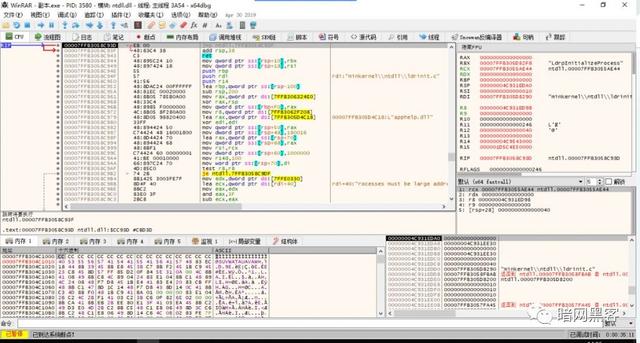

The analysis was done by ShadowServer using the SigBuster (Figure 13) tool. This section shows the top packers used by malware. Still, the mentioned steps can cover most of what’s out there.
#RESHACK RAR CODE#
There is also the Stolen Code technique, which makes it harder to find and recover OEP, and plenty of tricks that packers use to make reversing harder. For example, some packers don’t fully resolve imports. There are other variations not covered in the above steps that would require more work.

Now that you’ve got all imports resolved, all you have to do is click “Fix Dump in ImpRec” and choose the file you saved before, and you’re done. You should get the Imported functions with their status (valid:YES) (Figure 12): You’ll get a message saying the following:Ĭlick Ok and then click Get Import.
#RESHACK RAR UPDATE#
Update the field OEP to 1000 and click IAT AutoSearch. Now you have to rebuild imports using an ImpRec (Figure 10), launch the tool and select the running process (malware.exe). Click “Dump debugged process.”Ī box shows up (Figure 9). Using OllyDbg, there a plugin called OllyDump (Figure 8). Try loading the sample in OllyDbg (Figure 7), set a breakpoint on that jump and run the app, the app will break, press F7 and you’ll find yourself in the original unpacked code.įigure 7 – Original Unpacked Code (OllyDbg)Īfter finding the original OEP, you’ll have to dump the memory image of binary. That last jump (jmp section.UPX0) will lead straight to the unpacked code. In the case of UPX, the decryption routine starts as follows (Figure 5) and ends with Figure 6:įigure 5: UPX decryption routine start (Cutter)įigure 6: End of UPX decryption routine (using Cutter) You can also use common APIs such as GetCommandLine or GetVersionEx to get closer to the OEP. Or you can identify where the unpacked code is being written during tracing. This depends on the packer and its decryption algorithm, or whether you’re familiar with entry points generated by different compilers. There are multiple ways of getting the OEP. But when it comes to advanced packers, it can be hard, as they can use all kinds of tricks to prevent you from unpacking. That’s not difficult if you encounter a simple packer like UPX or ASPack. Even if it checks as not packed, that’s because malware authors sometimes use custom packing or modified versions of packers or scramble the code (change section names, add junk code and so on). Now analyze the sample using DiE ( Figure 3 ) to check if it’s packed and the packer it uses:Īs you can see, there are three sections (Figure 4), which proves it’s packed by UPX. First, you analyze the malware in VirusTotal to check if it’s recognized by antiviruses:įigure 2: Detection of a sample in VirusTotalĪs you can see, the file has been recognized by the majority of antivirus systems. Now that everything is set up, you can start analyzing the packed sample. Once you’re done, create a snapshot of the current VM’s state. VirusTotal (Online analysis of malware samples and URLs).Resource Hacker (Extract resources from executables).Process Hacker (Monitor system resources).Next, you need to have your analysis tools set up. Malware Analysis: First Steps - Creating your lab, Medium.
#RESHACK RAR HOW TO#
How to Get and Set Up a Free Windows VM for Malware Analysis, Zeltser Security Corp.OALabs Malware Analysis Virtual Machine, OALabs.For more details, check out the following links To analyze a malware in general, you must first isolate that malware in a virtual environment (VMware or VirtualBox) with the analyzes tools, in order not to infect your main machine. When it is run, the unpacking routine unpacks the code and loads it into memory in its original state.įigure 1: Generic example of packed executableĪnalyzing packed malware 1. A packer uses standard compression techniques (LZO, LZMA, …) on the file of course, the OS won’t recognize these code modifications, but the packer appends an unpacking routine to the executable. Packed executables are standalone files that can be executed while still compressed. Not to be confused with standard compressions (rar/zip). It’s an executable that has been compressed firstly to minimize its file size, but often to complicate the reversing process.


 0 kommentar(er)
0 kommentar(er)
